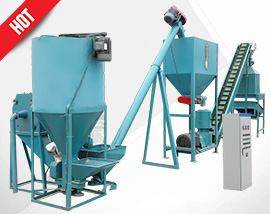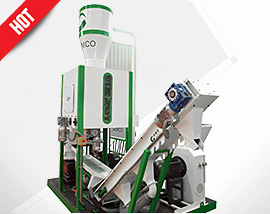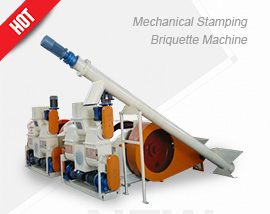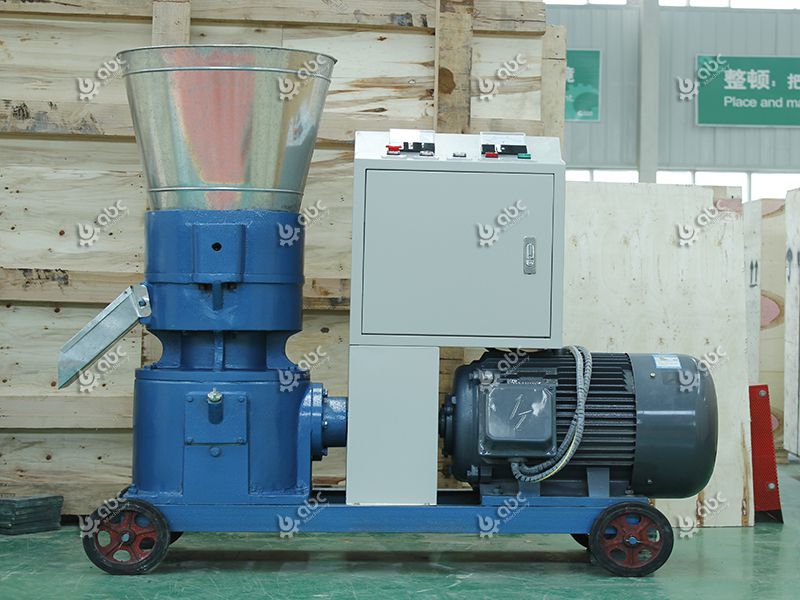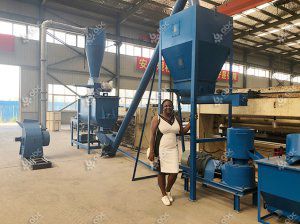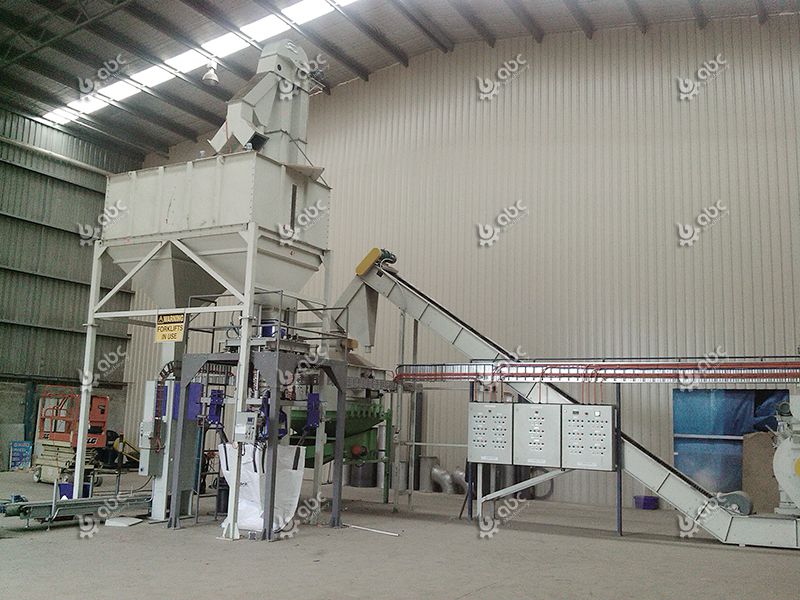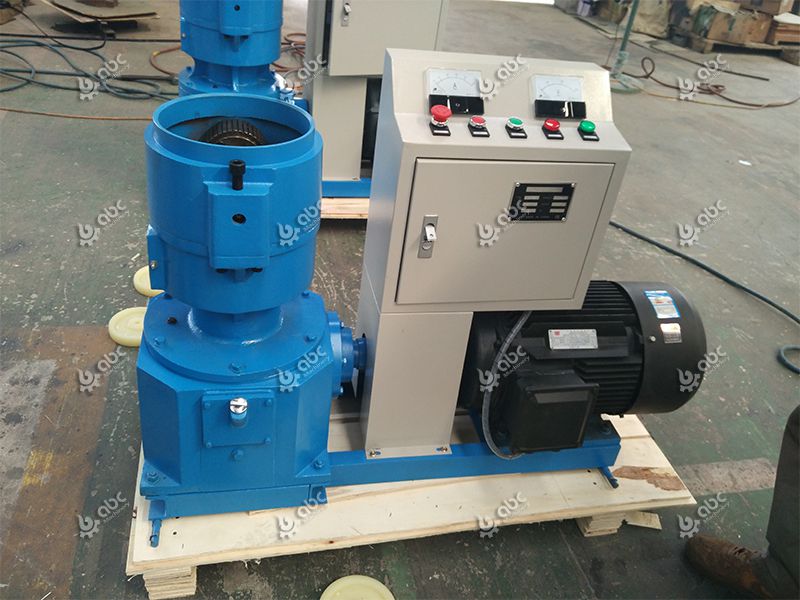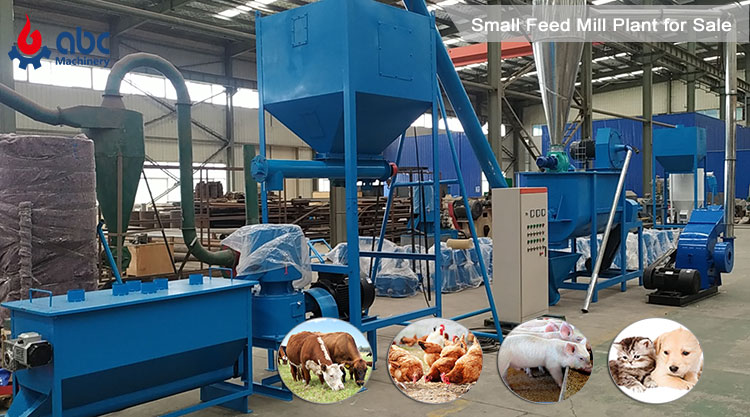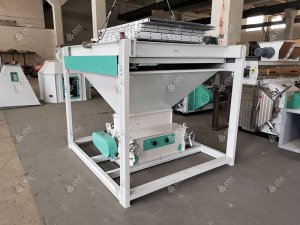Poultry Feed Processing Study on Pellet Size of Chicken Feed

Poultry Feed processing
The size of feed pellet is often overlooked in poultry feed processing production. However, different feed size will affect the digestion and absorption of poultry, along with the production performance, even in the case of the overall nutrition of the feed is similar. Therefore, poultry feed producers should learn to evaluate the most suitable pellet size for different poultry animals to minimize the impact factors. For example, what are the effects of feed particle size on digestive system of broiler or laying chicken? (HOT Product: PTO Pellet Mill for Sale)
How to decide the Pellet Size in poultry Feed Processing?
The digestive system development of poultry animals is affected by the size of feed pellets (granules).
Feed the poultry with larger pellets can help promote the development of muscle stomach and increase the length of intestinal tract. (Related Post: Turn Chicken Manure into Fertilizer Pellets )
Poultry Pelleted Feed Vs. Mash Feed
- Pelleted Feed for Poultry
The larger feed pellets can remain a longer time in the muscle stomach of chicken. Then the poultry feed will be released into the small intestine after be grounded into small particles. The longer the intestinal villi are, the larger the surface area of digestion and absorption is, and the more nutrients are absorbed. Researchers believe that feeding the poultry with larger feed pellets can promote the secretion of digestive enzymes in the small intestine, which is conducive to the digestion and absorption of nutrients. Here is the page of our small poultry feed mill machinery for sale, contact us if you are interested to get more details!
- Mash Feed for Poultry
When feeding the poultry animals with mash feed, the feed go quickly into the glandular stomach through the muscle stomach without much grinding. It can result in smaller muscle stomach, enlarged glandular stomach and reduced intestinal length. So it is not recommended to use mash feed for grown-up broiler and laying chickens. (Related post: mash feed production process >>)

Small Poultry Feed Processing Plant for Sale
This is a hot sell small poulry feed processing machine set for 500~1000kg/h production. If you want to setup a larger feed mill, don't hesitate to send us an inquiry and you will get a customized business plan with detailed equipment list and price! Read More: Complete Poultry Feed Manufacturing Process
Ideal Size of Poultry Feed
Effect of Crushing Process on Poultry Feed Pellet Size: The main factor affecting the size of poultry feed is the crushing method. There is no need to grind the fodder materials such as soybean meal, fish meal and premix feed. Grains (corn, wheat, and other grains) are ground and crushed.
As mentioned above, the feed size can seriously affect the intake of poultry animal. Then who to decide the ideal size for different poultry? Well, the feed size should be increased with the development of poultry’s beak, muscle stomach and digestive organs.

Broilers and Layers
Lay hens tend to feed on larger feed pellets when compare with broiler chicken. And this preference is more obvious with the increase of chicken’s age. However, too much of the larger feed can results in excess intake of energy and insufficient intake of some nutrients such as vitamins A, D, riboflavin, sodium, lysine and osamic acid. So poultry farmers generally feed laying chicken with the mixture of large feed pellets and small feed pellets. The large feed pellets are mainly energy feed such as corn, while the small pellets mainly contain amino acids, phosphorus, vitamins and minerals. Premix of vitamins and minerals are also usually made in small pellets.
In the first 6 weeks, 1-3mm powder is generally used. For chicks, the nutrients in the mash feed are more uniform. However, as the age of the chick increases, if continued feeding mash feed can lead to the smaller of muscle stomach and small intestine. The mash feed should be replaced with mixed feed (mash feed and pelleted feed) in appropriate time to ensure the development of chicken’s digestive organs. 55%~85% of the poultry feed should be at the size of 1~3mm.
Feed milling project for your reference: 2 ton/hour Animal Feed Processing Machine
For the chicken before the litter, the feed should include 2-4mm stone powder pellets, so as to ensure the quality of eggshell. The egg production declines and egg shell quality problems are due to poor nutrition in most cases. The feeders should observe the feeding situation in real time and determine the appropriate feeding frequency and quantity to make the chicken feed reasonable with large and small feed pellets every day. The uniform intake of large and small pellet feed is beneficial to the balanced nutrition of poultry animals.



